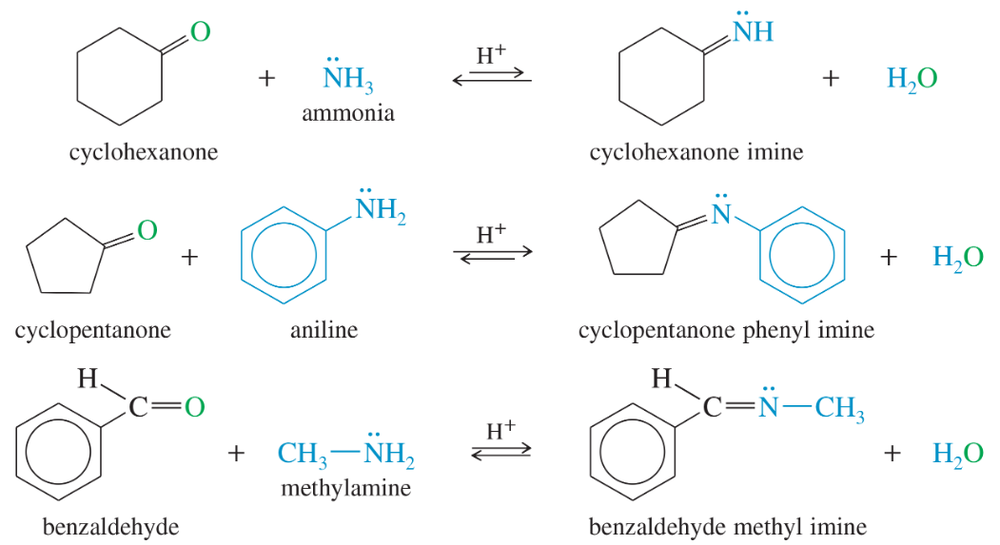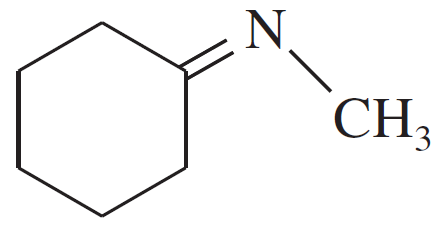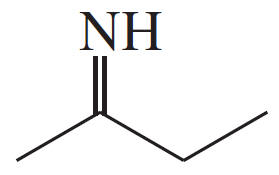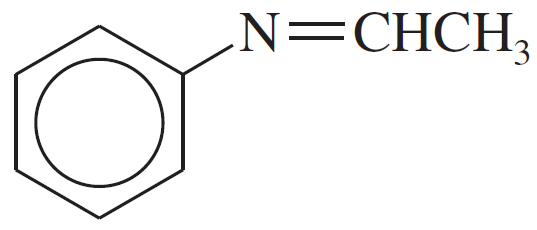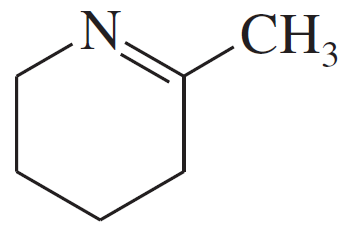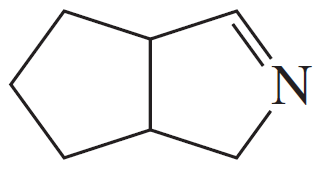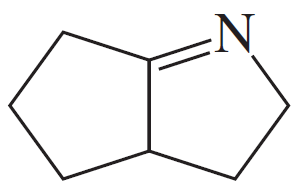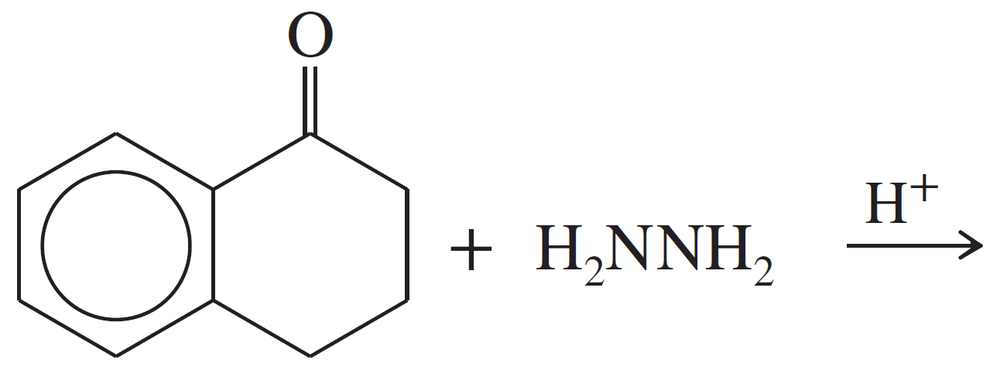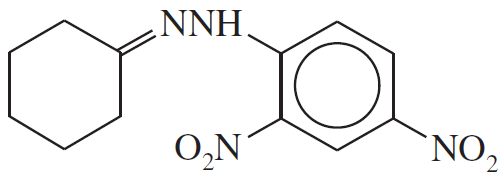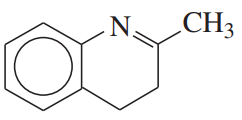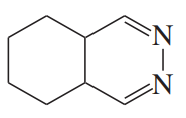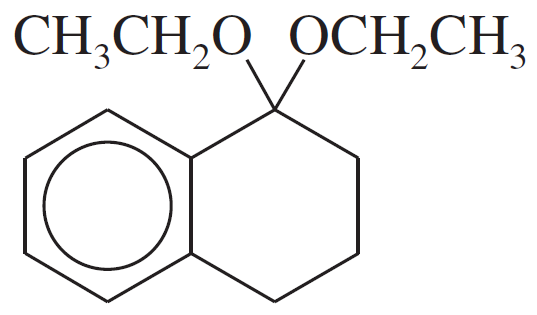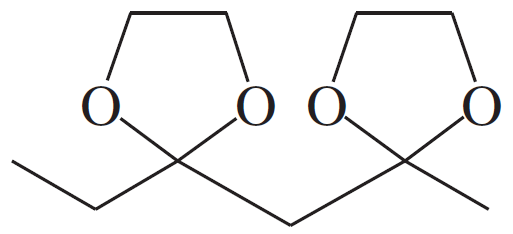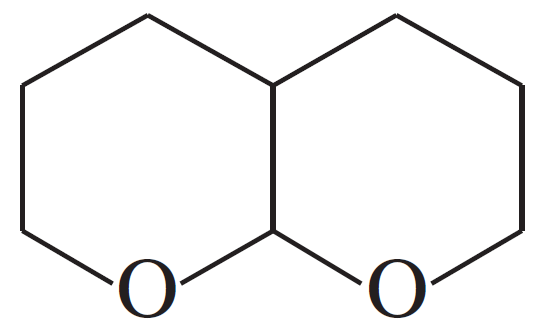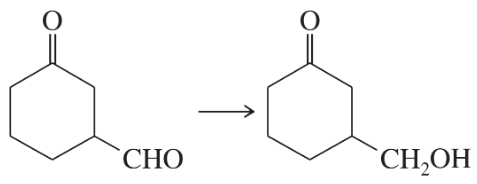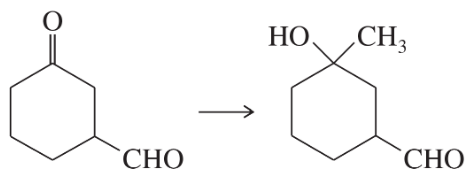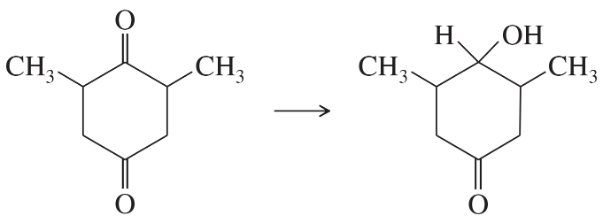 Back
BackProblem 16c
Show how you would accomplish the following syntheses.
c. hexan-1-ol → 2-hydroxyheptanoic acid
Problem 17
Propose mechanisms for the three imine-forming reactions just shown.
Problem 18a
Depending on the reaction conditions, two different imines of formula C8H9N might be formed by the reaction of benzaldehyde with methylamine. Explain, and give the structures of the two imines.
Problem 18d
Show how hex-1-yne might be converted to
d. 1,1,2,2-tetrabromohexane.
Problem 19a,b,c
Give the structures of the carbonyl compound and the amine used to form the following imines.
(a)
(b)
(c)
Problem 19d,e,f
Give the structures of the carbonyl compound and the amine used to form the following imines.
(d)
(e)
(f)
Problem 20a
Propose a mechanism for the hydrolysis of benzaldehyde methyl imine just shown.
Problem 21a
2,4-Dinitrophenylhydrazine is frequently used for making derivatives of ketones and aldehydes because the products (2,4-dinitrophenylhydrazones, called 2,4-DNP derivatives) are even more likely than the phenylhydrazones to be solids with sharp melting points. Propose a mechanism for the reaction of acetone with 2,4-dinitrophenylhydrazine in a mildly acidic solution.
Problem 22a,b
Predict the products of the following reactions.
(a)
(b)
Problem 22c,d
Predict the products of the following reactions.
(c)
(d)
Problem 23a,b,c
Show what amines and carbonyl compounds combine to give the following derivatives.
(a)
(b)
(c)
Problem 23d
Show what amines and carbonyl compounds combine to give the following derivatives.
(d)
Problem 23e
Show what amines and carbonyl compounds combine to give the following derivatives.
(e)
Problem 23f
Show what amines and carbonyl compounds combine to give the following derivatives.
(f)
Problem 24
Propose a mechanism for the acid-catalyzed reaction of benzaldehyde with methanol to give benzaldehyde dimethyl acetal.
Problem 25
Propose a mechanism for the acid-catalyzed hydrolysis of cyclohexanone dimethyl acetal.
Problem 26a,b,c
Show what alcohols and carbonyl compounds give the following derivatives.
(a)
(b)
(c)
Problem 27
In the mechanism for acetal hydrolysis shown, the ring oxygen atom was protonated first, the ring was cleaved, and then the methoxy group was lost. The mechanism could also be written to show the methoxy oxygen protonating and cleaving first, followed by ring cleavage. Draw this alternative mechanism.
Problem 28a
Propose a mechanism for the acid-catalyzed reaction of cyclohexanone with ethylene glycol to give cyclohexanone ethylene acetal.
Problem 28b
Propose a mechanism for the acid-catalyzed hydrolysis of cyclohexanone ethylene acetal.
Problem 28d
Propose a mechanism for the acid-catalyzed hydrolysis of the acetal given in Problem 18-26(f).
Problem 29a
Show how you would accomplish the following syntheses. You may use whatever additional reagents you need.
(a)
Problem 29b
Show how you would accomplish the following syntheses. You may use whatever additional reagents you need.
(b)
Problem 29c
Show how you would accomplish the following syntheses. You may use whatever additional reagents you need.
(c)
Problem 29d
Show how you would accomplish the following syntheses. You may use whatever additional reagents you need.
(d)
Problem 29e
Show how you would accomplish the following syntheses. You may use whatever additional reagents you need.
(e)
Problem 29f
Show how you would accomplish the following syntheses. You may use whatever additional reagents you need.
(f)
Problem 30
Trimethylphosphine is a stronger nucleophile than triphenylphosphine, but it is rarely used to make ylides. Why is trimethylphosphine unsuitable for making most phosphorus ylides?
Problem 30a
Write the sequence of steps required for the conversion of benzene into benzenediazonium chloride.
Problem 31a
Like other strong nucleophiles, triphenylphosphine attacks and opens epoxides. The initial product (a betaine) quickly cyclizes to an oxaphosphetane that collapses to an alkene and triphenylphosphine oxide.
(a) Show each step in the reaction of trans-2,3-epoxybutane with triphenylphosphine to give but-2-ene. What is the stereochemistry of the double bond in the product?

